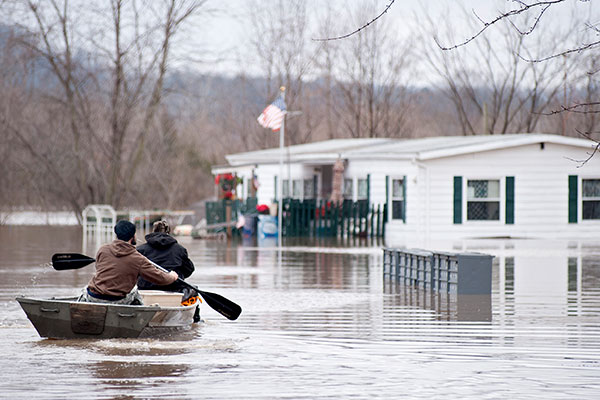
Floods, farms fuel jump in methane emissions
LONDON, September 27, 2016
A sharp increase in methane, a potent greenhouse gas, in the Earth's atmosphere since 2007 is the result of higher emissions from biological sources such as rice paddies, cattle and swamps rather than fossil fuels, researchers said on Tuesday.
Methane traps heat, contributing to global warming. In 2014 the growth rate of methane in the atmosphere was double that of previous years, with emissions rising particularly in the tropics, said a study led by UK-based Royal Holloway, University of London.
"Our results go against conventional thinking that the recent increase in atmospheric methane must be caused by increased emissions from natural gas, oil and coal production," said lead author Euan Nisbet.
"Our analysis of methane's isotopic composition clearly points to increased emissions from microbial sources, such as wetlands or agriculture."
Methane increased through most of the 20th century, driven largely by leaks from the gas and coal industries, then appeared to be stabilising at the beginning of this century.
But since 2007, levels of methane have started growing again, the scientists said.
The rise has likely resulted in part from changing weather patterns in hot and wet tropical areas of the world, according to the findings published in the journal Global Biogeochemical Cycles.
Nisbet's team, together with the U.S. National Oceanic and Atmospheric Administration (NOAA), looked at measurements and samples of air taken from places like Alert in the Canadian Arctic, Ascension in the South Atlantic, and Cape Point in South Africa.
CLIMATE CHANGE HARBINGER?
Tropical wetlands produce around a fifth to a quarter of global methane emissions, and those emissions respond quickly to changes in temperature and precipitation - for example, as wetlands expand by the end of the rainy season, the study noted.
In the La Niña years of 2007 and 2008, methane emissions from some Amazonian wetland regions may have increased by as much as 50 percent compared to the period 2000 to 2006, it added. High Amazon flood levels also occurred in most years from 2009 to 2014.
The pace and nature of the current methane rise imply that emissions - both from natural wetlands and agriculture - are responding to sustained changes in precipitation and temperature in the tropics, the researchers said.
"If so, is this merely a decadal-length weather oscillation, or is it a troubling harbinger of more severe climatic change?" they asked in their conclusion.
In past global climate events, methane has been both a "first indicator" and a "first responder" to climatic change, they said.
Comparison with historic events suggests that if methane growth continues and is driven by emissions unrelated to fossil fuels, the present increase "is already becoming exceptional, beyond the largest events in the last millennium", they added.
In December, around 195 nations agreed a radical shift away from fossil fuels with a goal of limiting a rise in average global temperatures to well below 2 degrees Celsius (3.6 Fahrenheit) above pre-industrial times while "pursuing efforts" for 1.5C (2.7F).
Temperature rise reached 1.3C in the first half of 2016, which is almost certain to be the warmest year since records began in the 19th century, beating 2015.-Reuters







